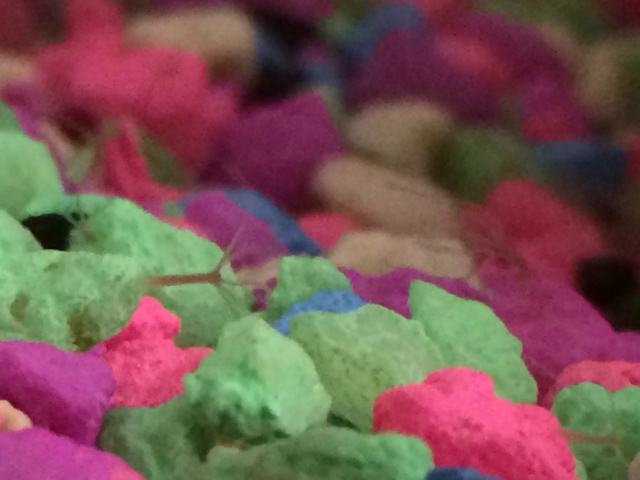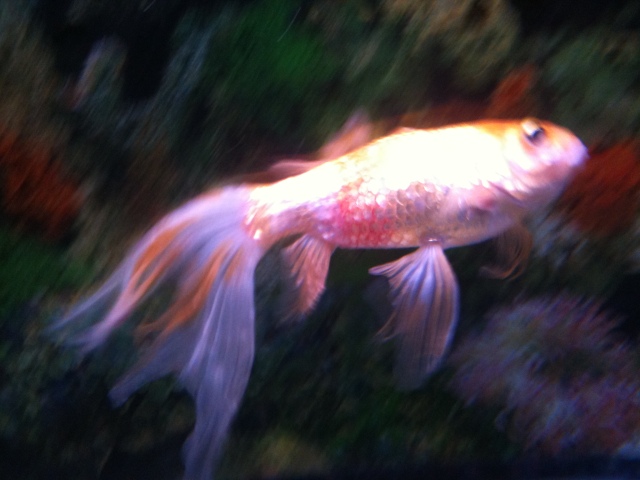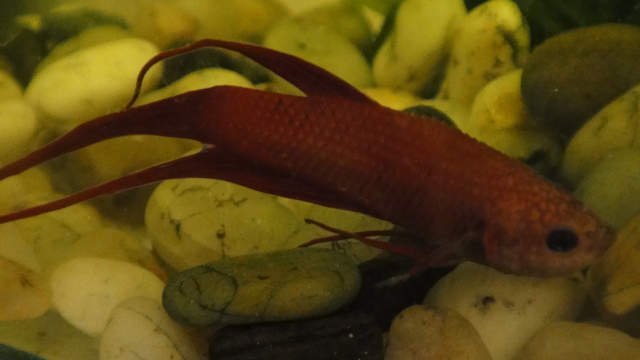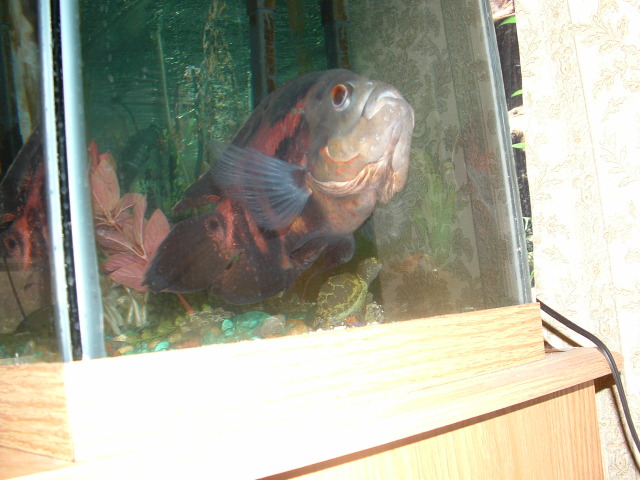QuestionQUESTION: I have a great fish in my aquarium and I want to know what type of fish he is. I can provide a photo but in the meantime, he is approximately 9 inches long with the body of a tinfoil barb, the caudal fin of a tiger barb with the same kind of striping, and the mouth of a kissing gourami. Can you help me?
Thanks.
ANSWER: what type of fish is it.. bottom fedder, does he swim at mid or top of tank. A photo would be the best, i could only guess right now.
Sounds like it could be a killi or cyprin, try http://www.tropicalfishcentre.co.uk/Guide.htm for comparing.
---------- FOLLOW-UP ----------
QUESTION: He swims mid tank. How can I send you a picture? I am not sure how to import into this email setup. Thanks for your help.
AnswerFlagtail prochilodus
Semaprochilodus taeniurus
FAMILY
Curimatidae
TAXONOMY
Semaprochilodus taeniurus Valenciennes, 1817, Amazon River.
OTHER COMMON NAMES
English: Silver prochilodus; German: Nachtsalmler, Schwanzstreifensalmler; Finnish: Juovahuulitetra; Portuguese: Jaraqui, jaraqui escama fina.
PHYSICAL CHARACTERISTICS
Standard length 9.4 in (24 cm). Like other members of this family, has many small teeth on the jaws and a mouth with enlarged fleshy lips that can be turned outward to form a rasping or suction disk. The lips are often lined with fine papillae, thus the name "flannel mouths." Deep-bodied; dark gray on the back fading to silvery hues on the flanks. Dorsal, anal, and adipose fins are dark gray; pectoral and pelvic fins are nearly clear. Edges of the dorsal and anal fins appear yellow. The caudal fin is most striking, yellow with prominent black horizontal stripes.
DISTRIBUTION
Central portion of the Amazon River basin in Brazil.
HABITAT
Main channels of streams and rivers, as well as floodplain lakes.
BEHAVIOR
Undertakes annual migrations for spawning, feeding, and dispersal. At the beginning of the flood season, schools of mature fish migrate downstream from tributaries to the Amazon River to spawn. Migration occurs during the day; spawning takes place at night. After spawning, small groups move into flooded forests of their home tributaries to feed. As soon as the water levels begin to fall, adults undertake a complex dispersal migration. They move back into the main channel of the Amazon and migrate upstream, before dispersing into tributaries other than those in which they lived the year before.
FEEDING ECOLOGY AND DIET
Primarily consumes plants, algae, and other detritus. It can use its lips as suction cups to eat detritus attached to trees and other submerged vegetation in the flooded forest. Large quantities of mud are often reported in the stomach. Although the fishes are moderate in size, they are preyed upon by larger predatory fishes, such as catfishes.
REPRODUCTIVE BIOLOGY
Spawning may occur in shallow water along the course of large rivers, sometimes below barriers such as waterfalls. Males emit loud, grunting noises to attract females to the spawning areas. Females scatter a single batch of small eggs into welloxygenated waters. The eggs and fry are carried passively downstream and eventually onto the floodplain, where they begin feeding. After two years, these offspring spawn for the first time.
CONSERVATION STATUS
Not listed by the IUCN.
SIGNIFICANCE TO HUMANS
Popular worldwide as an aquarium species. As one of the most common species in the Amazon basin, it is an important food fish for local villages and towns. It is also traded commercially to areas outside the Amazon basin.

 Whats in my tank?!?
Question
Squirming thing Squirming thing
T
Whats in my tank?!?
Question
Squirming thing Squirming thing
T
 Gold fish Symptons
Question
Goldfish
I have a goldfish that is 20 years ol
Gold fish Symptons
Question
Goldfish
I have a goldfish that is 20 years ol
 sick fighter
Question
fighting fish
Hi I brought fighter today and m
sick fighter
Question
fighting fish
Hi I brought fighter today and m
 high nitrites Oscar mouth opening and closing
QuestionQUESTION: You have helped me before. I HAVE A 7
high nitrites Oscar mouth opening and closing
QuestionQUESTION: You have helped me before. I HAVE A 7
 white spot or not
QuestionQUESTION: hi nathan.i have a juwel vision 450li
white spot or not
QuestionQUESTION: hi nathan.i have a juwel vision 450li